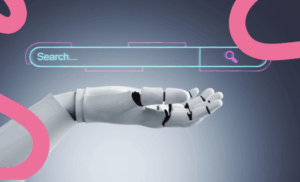In a world where artificial intelligence is revolutionising the creation of content… Yes, yes, I know, we’re off to a bad start. If an article starts with this movie trailer-worthy sentence, there’s a good chance it was written by AI. And that’s just what we’re going to explore (another word that gives AI away!) in this text. Without a doubt (wink wink), here are the key clues to detect if an article has been generated by a machine and not by a human over a coffee with dark circles under his eyes.
1. Overuse of generic phrases
If the text is full of phrases like ‘It is important to note that’, ‘Since the dawn of time’, or ‘In today’s society’, you should be suspicious. Not because they are incorrect, but because they sound like they come from a 1950s writing manual.
2. Structure too perfect and predictable
If everything is so tidy that it looks like a robot wrote it… it was probably written by a robot. Introduction with promise, development with logical subtitles, conclusion closing the circle flawlessly. Humans sometimes ramble, go off the deep end, throw in a random story. The AI doesn’t, it’s the perfect pupil.
3. Lack of personal opinions or anecdotes
Artificial intelligence has no experiences of its own (for now…), so its texts rarely include anecdotes, racy opinions or expressions of frustration like ‘Why isn’t anyone talking about this? If an article sounds too neutral and objective, it may have been written by a bot.
4. Repetition of ideas with different words
If you read one paragraph and then another that says the same thing, but with synonyms, start to get suspicious. The AI is an expert at inflating texts by rewriting the same idea with different words. It’s like that friend who never gives a straight answer and goes round in circles before getting to the point.
5. Lack of depth of analysis
The AI knows everything, but doesn’t know much about anything. It can write about any subject, but without going too deep. If the article leaves you with the feeling ‘well, they told me the basics, but I didn’t learn anything new’, it could be an automatically generated text.
6. Use of forced or unnatural transitions
‘That said’, ‘Therefore’, ‘Ultimately’… If you see these sentences in each paragraph as if they were links in a chain, something reeks of artificial intelligence. Humans sometimes put in filler sentences, but not with this mathematical precision.
7. Vaguely explained or invented examples
If an article mentions examples that sound good but no one can verify, red flag. The AI is capable of inventing generic or irrelevant examples just to fill in. ‘One study suggests that…’ What study? ‘Many people are of the opinion that…’ Which people? Ask for sources, and see if the AI gets nervous.
8. Excessive use of words such as ‘explore’ and ‘ navigate’.
If the article invites you to ‘navigate a topic’ or ‘explore new perspectives’, you know what’s going on. It’s not that humans don’t use these words, but AI seems obsessed with making everything sound like a journey of self-discovery.
9. Too much grammatical and syntactical correctness
Note here: if the text is impeccable, without a single typo, without a misplaced comma, without a colloquial expression… perhaps it was not written by a human. The AI writes with the neatness of a grammar teacher. Humans, on the other hand, sometimes drop a more informal expression, use dashes to emphasise something – or use ellipses for drama…
10. Excessively formal and neutral language
If the tone of the article is so neutral that it could be read in a corporate newsletter, it can be AI. Humans change register, use our own expressions and sometimes throw in a joke (or an emoji if they let us 😜). If the text never relaxes, be wary.
Final thought
Ultimately (hehe, another cliché phrase), we can conclude that there are several ways to detect if a text has been generated by AI. If you find too many of these patterns together, you may be looking at an artificially intelligent article. But then again, in today’s society (there goes another one), it is increasingly difficult to tell them apart. That said (ok, I’ll stop now), next time you read a perfect but impersonal article, ask yourself: was this written by a human… or a robot wanting to sound sophisticated? 🤖










